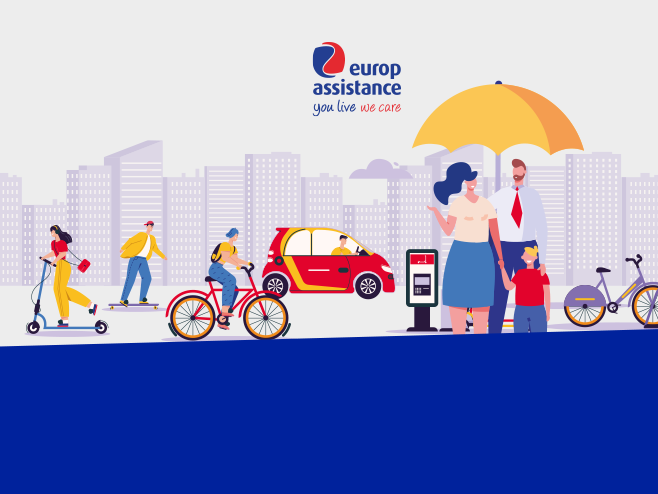Greenhouse gas emissions

We measure and report the greenhouse gas (GHG) emissions generated by our Group operations to verify the effectiveness of the implemented reduction strategies and to demonstrate our consistency with the efforts we require from our customers, the companies in which we invest and our suppliers.
The monitoring of our GHG emissions, part of our Environmental Management System (EMS), involves periodic checks subject to internal audits and to assurance by an independent third party (for more information you can read the Independent Auditors' Report in the Sustainability Statement).
We assess our GHG emissions using the WRI GHG Protocol, applying both market-based and location-based methods.
The first method, the market-based, determines GHG emissions from the purchase of electricity and heat by considering the specific emission factors reported by our suppliers. For the purchase of electricity from renewable energy sources, an emission factor equal to zero is attributed for the Scope 2.
Instead, the location-based method involves accounting for emissions from the purchase of electricity, applying national average emission factors for the different countries in which we purchase electricity.
We are committed to reduce the GHG emissions generated by our own operations to a net-zero level by 2035. This means to reduce at least 90% Scope 1 and Scope 2 emissions compared to the 2019 baseline and compensate with carbon removals the residual. The net-zero definition will be subject to updates in line with the new emerging regulations.
To follow a science-based path to reach net-zero, we set interim targets:
- A 35% reduction on all Scopes by 2025 compared to the 2019 baseline.
- A 60% reduction on all Scopes by 2030 compared to the 2019 baseline1.
Our strategy includes Scope 1, 2 and Scope 3 emissions related to operational activities (offices, data center, mobility). The reductions above will be supported through the workplace innovation and the space optimization, by further improving the energy efficiency and leveraging on the purchase of renewable energy. The share of hybrid and electric vehicles in the company car fleet will also be increased.
2025, 2030, 2035 Targets
Science-based reductions of GHG emissions from Group operations against the 2019 baseline:
- By year end 2025, –35% Scope 1, 2 and 3.
- By year end 2030, –60% Scope 1, 2 and 31.
- By year end 2035, net-zero status2.
Performance in 2024
75,322 t CO2 e total GHG emissions with Market-based method (-46.1% compared to 2019).
Breakdown of GHG emissions by Scope3
| Greenhouse gas emissions t CO2e |
2019 (base year) |
2020 |
2021 |
2022 |
2023 |
2024 |
| Scope 1 (A) |
48,224 |
35,628 |
35,250 |
36,995 |
34,424 |
29,804 |
| Scope 2 (market based) (B) |
23,058 |
19,145 |
16,411 |
15,231 |
12,625 |
7,860 |
| Scope 2 (location based) |
73,419 |
63,670 |
61,127 |
55,519 |
50,310 |
48,967 |
| Scope 3 (C) |
68,410 |
39,768 |
38,486 |
40,593 |
40,190 |
37,658 |
| Totale (A+B+C) |
139,692 |
94,541 |
90,147 |
92,819 |
87,239 |
75,322 |
Breakdown of Scope 3 GHG emissions
| Scope 3 category | 2024 share of GHG emissions out of total Scope 3 |
| Purchased goods and services [Cat.1] |
13% |
| Fuel-and-energy-related activities (not included in Scope 1 or 2) [Cat.3] |
60% |
| Waste generated in operations [Cat.5] |
2% |
| Business travel [Cat.6] |
25% |
| Investments [Cat.15] |
Note:
1. This target includes the following sub targets: -70% on Scope 1 + 2; -50% on Scope 3.
2. –90% Scope 1, 2 and compensation with carbon removals of the residual emissions.
3. GHG emissions are calculated in accordance with the GHG Protocol - Corporate Accounting and Reporting Standard, represent 100% of the Group’s workforce linked to emission sources in operational control (88.4% measured and 11.6% extrapolated), and exclude the emissions of the agricultural business of the Leone Alato group and the real estate portfolio managed by GRE.
The measured data represent the following organisational units: Argentina, Austria, Bulgaria, Banca Generali, Chile, Croatia, Czech Republic, Europ Assistance, France, Germany, Greece, Hungary, Ireland, Italy, Malaysia, Romania, Poland, Portugal, Slovakia, Slovenia, Serbia, Spain, Switzerland and the UK. The GHG emissions of organisational units not included in this list have been extrapolated. The growth of the reporting perimeter (+2.6% in terms of the Group’s workforce compared to 2023) made it necessary to restate the entire trend from 2019. The gases included in the calculation are CO2, CH4 and N2O for combustion processes and all climate-altering gases reported in the IPCC AR4 for other emissions (long-lived greenhouse gases - LLGHGs). Scope 3 category 1 - Purchased goods and services includes paper purchase and water-related services, Scope 3 category 6 - Business travel includes air, train and private or rented car travels.



